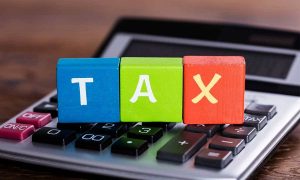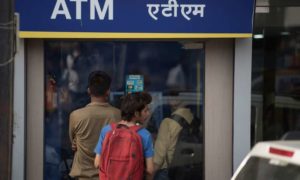The Union Budget for the fiscal year 2024-25 introduced significant modifications in the realm of personal finance and income tax. One notable adjustment pertains to the National Pension System (NPS) contribution ceilings for private sector employers, which have been elevated from 10% to 14% of an employee’s basic salary.
Additionally, the deduction threshold for both private and public sector workers has been raised from 10% to 14%. These enhancements are exclusively accessible under the New Tax Regime.
Read More: What is Bank of Baroda’s systematic deposit plan? Key features to know
The National Pension System (NPS) is a retirement savings scheme established in India under the stewardship of the Pension Fund Regulatory and Development Authority (PFRDA). This initiative endeavors to foster financial stability in individuals’ post-retirement years through the cultivation of a disciplined approach to saving and investment, thereby addressing their financial requirements in later life.
NPS taxation differed from the Old Tax Regime and New Tax Regime. Under the old tax regime, NPS offers tax benefits under three sections of the Income Tax Act, 1961.
Key points to note on NPS taxation
1. NPS provides you with two types of accounts: Tier I and Tier II. Tier I is mandatory retirement account, whereas Tier II is a voluntary saving Account associated with your PRAN.
2. In the context of the National Pension System (NPS), it is crucial to highlight the provision of a one-way switch that allows individuals to transfer funds from Tier II to Tier I. Consequently, upon retirement or exiting NPS before the age of 70, the funds held in Tier II can be considered for post-retirement withdrawals, aligning with the corresponding tax implications. Specifically, under this arrangement, 60% of the withdrawal amount is exempt from tax obligations.
Read More: RBI To Launch UPI Delegated Payments: Multiple Users, One Account
To elaborate further on this tax benefit, if 60% of the NPS corpus is utilized for a lump sum withdrawal, and the remaining 40% is allocated towards the purchase of annuities, no taxes are levied on this transaction. This tax-efficient strategy exemplifies how leveraging NPS functionalities can optimize retirement planning and financial outcomes for contributors.
3. An annuity provides periodic payments to the recipient over a specified period. The annuity income received in the following years will be taxed at the applicable slab rate. Tier II is a tax-saving option under Section 80C, featuring a three-year lock-in period specifically available to government employees.
“This means that the Tier II account, instead of being considered a mutual fund alternative, is best regarded as an extra contribution towards your pension, albeit with better liquidity than the normal Tier I NPS account. You can let it accumulate and eventually use it to enhance your pension,” Dhirendra Kumar, CEO, Value Research, said in a column.
4. Tier I money is not entirely illiquid; it is available for partial withdrawal for specific purposes. These purposes include funding your children’s higher education or financing their wedding expenses. Furthermore, you may access your NPS funds for purchasing a house or building a residential property. Withdrawals for specified health emergencies are also permitted. In situations where the account holder experiences a disability exceeding 75%, partial withdrawals are allowed.
5. Tier II is an add-on account which provides you the flexibility to invest and withdraw from various schemes available in NPS without any exit load.
You can save the details captured during Tier II Activation process at regular intervals by clicking on ‘Save and Proceed’. In case you would like to complete the Tier II Activation process at a later date, the pending application will be available for completion through ‘Verify PRAN’ for a finite period.
Read More: Fixed Deposit for Minor – How To Open Minor FD Account
How to activate Tier II account
To activate a Tier II account in the NPS, individuals must first have a Tier I account. This can be done through both offline and online platforms by NPS investors.
To initiate the online activation process, please navigate to the official electronic National Pension System website (eNPS) and select the Tier II activation tab. Input your PRAN (Permanent Retirement Account Number), date of birth, and PAN details as required. Proceed by clicking on ‘Verify PRAN’ to initiate the generation of an OTP that will be sent to your registered mobile number for authentication.
Upon successful verification of your PRAN, proceed to furnish your bank details and click on ‘Validate Aadhaar’. Make a note of the acknowledgement number provided on the screen for future reference.
You will then be prompted to enter nominee information and upload scanned copies of your PAN card and a cancelled cheque. Once the necessary documents are prepared, click on the ‘Upload’ button to submit them.
Subsequently, electronically sign the application using your Aadhaar number. After completion, download the form, print a copy, affix your signature, and dispatch it via registered post to the NSDL’s headquarters in Mumbai for further processing.





































